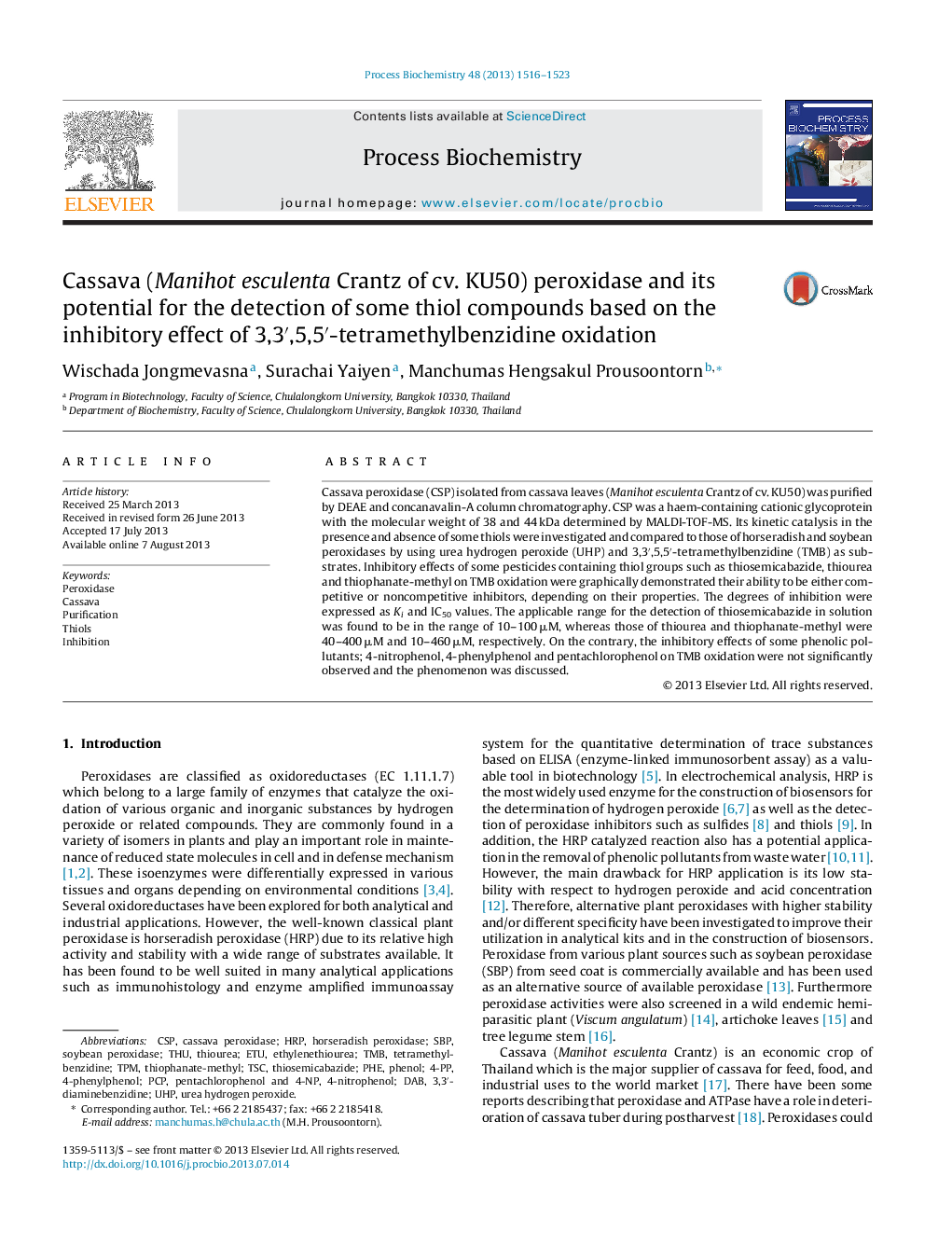| Article ID | Journal | Published Year | Pages | File Type |
|---|---|---|---|---|
| 34548 | Process Biochemistry | 2013 | 8 Pages |
•Peroxidase was first isolated from cassava leave, an agricultural waste in Thailand.•CSP had a potential for the detection of thiosemicarbazide, thiourea and thiophanate methyl.•This can be an advantage to the applicable use of the CSP in chemical analysis.
Cassava peroxidase (CSP) isolated from cassava leaves (Manihot esculenta Crantz of cv. KU50) was purified by DEAE and concanavalin-A column chromatography. CSP was a haem-containing cationic glycoprotein with the molecular weight of 38 and 44 kDa determined by MALDI-TOF-MS. Its kinetic catalysis in the presence and absence of some thiols were investigated and compared to those of horseradish and soybean peroxidases by using urea hydrogen peroxide (UHP) and 3,3′,5,5′-tetramethylbenzidine (TMB) as substrates. Inhibitory effects of some pesticides containing thiol groups such as thiosemicabazide, thiourea and thiophanate-methyl on TMB oxidation were graphically demonstrated their ability to be either competitive or noncompetitive inhibitors, depending on their properties. The degrees of inhibition were expressed as Ki and IC50 values. The applicable range for the detection of thiosemicabazide in solution was found to be in the range of 10–100 μM, whereas those of thiourea and thiophanate-methyl were 40–400 μM and 10–460 μM, respectively. On the contrary, the inhibitory effects of some phenolic pollutants; 4-nitrophenol, 4-phenylphenol and pentachlorophenol on TMB oxidation were not significantly observed and the phenomenon was discussed.
